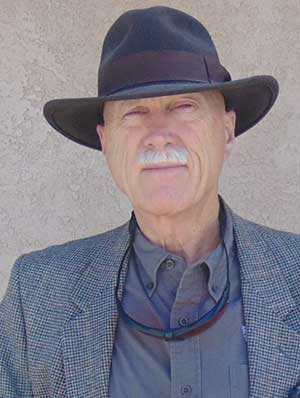Opinion

Arizona -(Ammoland.com)- Judge Robert Lasnik is a U.S. District Court judge in Seattle, Washington. He has issued a restraining order, forbidding Cody Wilson and Defense Distributed from releasing documents on the Internets that show how to make simple guns and gun parts with 3D printers.
The judge issued the restraining order as requested in a lawsuit filed against the federal government, for refusing to prevent the publication of the information. From seattletimes.com:
During the Tuesday hearing in Seattle, Eric Soskin, a lawyer for the U.S. Justice Department, said they reached the settlement to allow Defense Distributed to post the material online because the regulations were designed to restrict weapons that could be used in war, and the online guns were no different from the weapons that could be bought in a store.
Since the weapons “did not create a military advantage,” he told Lasnik, “how could the government justify regulating the data?”
But the judge countered, “There is a possibility of irreparable harm because of the way these guns can be made.”
In the Defense Distributed First Amendment case, the Obama administration claimed that computer code on how to build a simple single shot handgun was a military weapon that should be regulated under International Traffic in Arms Regulations (ITAR). The regulations are designed to control the export of defense and military related technologies.
The current administration noted the arms supposedly regulated are already superseded by current military organizations all over the world. There is not a military in the world that does not have access to better military technology than is made available in the computer code which the Obama administration attempted to censor.
It made the obvious statement that non-automatic firearms of .50 caliber or less are not inherently military. From the SAF press release:
Significantly, the government expressly acknowledges that non-automatic firearms up to .50-caliber – including modern semi-auto sporting rifles such as the popular AR-15 and similar firearms – are not inherently military.
Judge Lasnik’s restraining order will likely be overturned. It may lead to a Supreme Court case to reign in the power of dictatorial district judges to issue commands to the nation. Justice Thomas has already hinted at such a necessity. From Trump v. Hawaii:
In sum, universal injunctions are legally and historically dubious. If federal courts continue to issue them, this Court is dutybound to adjudicate their authority to do so.
Essentially, universal injunctions allow any one of 600 federal district judges to impose their will on the United States Government. This allows anyone who wants a particular outcome to judge shop for a judge that will order the federal government to do what the special interest wishes.
What was available for Judge Lasnik to hang his injunction on? The possibility of “irreparable harm because of the way these guns are made”.
It has nothing to do with ITAR. The Trump administration did not allow for the code on how to make nuclear weapons, advanced military radars, or laser cannon to be released.
Every release of information has the potential for “irreparable harm”. The fabric of the U.S. Constitution is based on the idea that liberty is more important than hypothetical potentials of harm. Anyone can dream up hypothetical potentials. To allow hypotheticals to rule the nation undercuts the rule of law.
How the do the people bringing the lawsuit have standing? Where have they been harmed? The information that would be allowed is already on the Internets. The ability and knowledge on how to make simple firearms is already widely available on paper. People have been making guns at home for hundreds of years.
Where does a single judge in Seattle obtain the power to neutralize the First Amendment for the nation based on a dubious theory of hypothetical harm?

About Dean Weingarten:
Dean Weingarten has been a peace officer, a military officer, was on the University of Wisconsin Pistol Team for four years, and was first certified to teach firearms safety in 1973. He taught the Arizona concealed carry course for fifteen years until the goal of constitutional carry was attained. He has degrees in meteorology and mining engineering, and recently retired from the Department of Defense after a 30 year career in Army Research, Development, Testing, and Evaluation.
